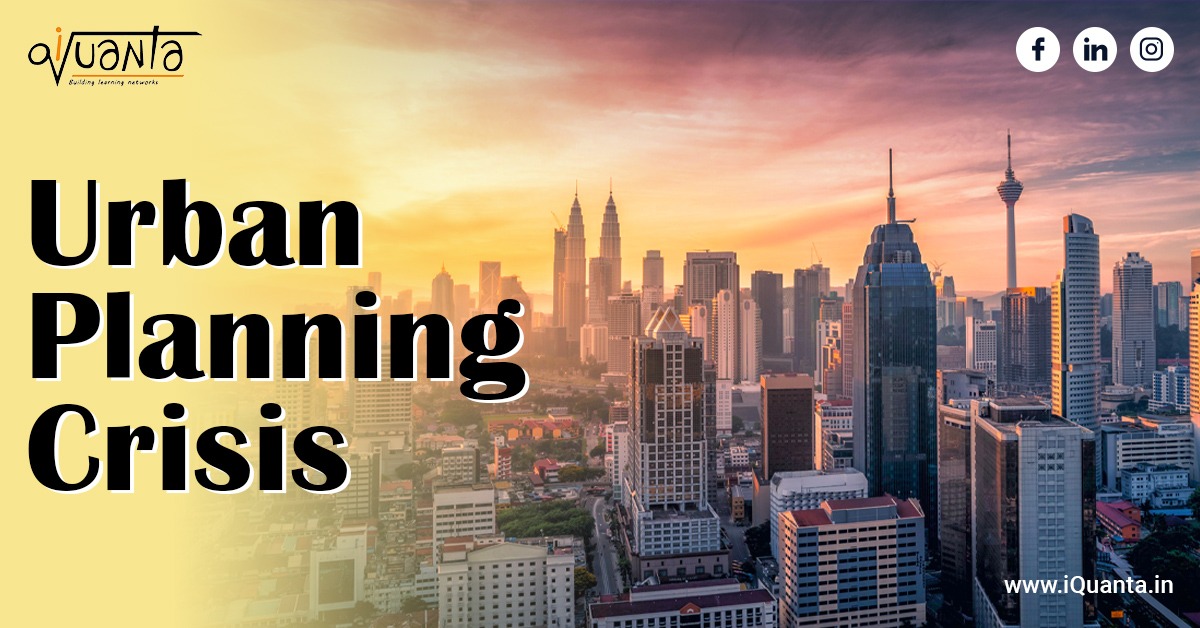India is rapidly transforming into an urban country. There was a time when only 30% of the population used to live in urban areas but today more than half of our population already live in an urban setting.
It is estimated that by 2036 around 73% of the total population could come to reside in cities. Looking at the landmass, cities occupy just 3% but contribute close to 60% of the GDP. This GDP number is further likely to improve and thus it’s in everybody’s best interest to make cities more livable.
However, the problem is that the majority of our cities aren’t exactly livable. There are many issues concerning electricity, sewage, public transport, roadways, breathable air, etc. We are lacking in many departments and something needs to be done to improve the standard of living.
Today the national capital of the country doesn’t have breathable air most of the time, many cities are facing acute shortage of water, and many cities have poor drainage systems. Hence, urban planning is the need of the hour but we aren’t equipped to deal with the complexities.
In a 144-page report, NITI Aayog has tried to outline some of the issues. The first issue being that we are not accurately identifying the extent of urbanization in this country. This is because our definition of ‘urban centres’ is not proper and close to 7933 “urban settlements” still continue to be governed as “rural entities.”
Secondly, there is the management problem. Urban local governments are expected to plan the development process which is not happening.
Many agencies are involved in urban planning, implementation, infrastructure development at the city as well as State levels. This has increased the complexity of the existing framework leading to overlapping of functions, lack of accountability and coordination, time delays, resource wastage, etc.
There is a need for master plans to guide and regulate the development of cities and are critical for managing urbanization. However, 65% of the 7933 urban settlements do not have any master plan. This leads to issues like traffic congestion, flooding, environmental pollution, hazardous construction etc.
The thing is that we don’t even have enough urban planners who can assist in the planning and maintenance of thousands of up-and-coming towns and small cities.
As per NITI Aayog’s estimates, only ~17,000 urban planners could have graduated in the last 35 years in India and this dearth of professional planners is reflected in the participation rates of planning related degrees.
To compare it with the UK, it has 38 planners per 100,000 population, whereas in India we have 0.23 planners per 100,000 people. This shows how inadequate our manpower is.
Hence, there is a need to revisit urban planning at the topmost levels.
We need to have some kind of master plan which needs to be reviewed and upgraded to adopt the latest advancements. Therefore as the report suggests maybe we need to have an apex committee at the state level to undertake a regular review.
Also, we need to adopt more India-centric solutions instead of relying on Western planning solutions. So there is a need to review the whole planning approach as well. Finally, we need to build more capacity to address the many problems plaguing urban planning in India. We need more graduates, we need better private participation and we also need local leadership to take up the mantle.
There are many suggestions in the report on how we could better prepare for the future. It has to be seen which suggestions the government takes up to achieve the urban goal.
To structure your CAT online preparation in an efficient way consider joining iQuanta which is a top online cat coaching institute and being a part of the iQuanta CAT 22 Course.
You can also check out and be a part of their Facebook group for peer learning, doubt solving and free material.
For 24*7 doubts-solving, FREE guidance and counselling and peer to peer learning, join the CAT preparation Fb group below:



